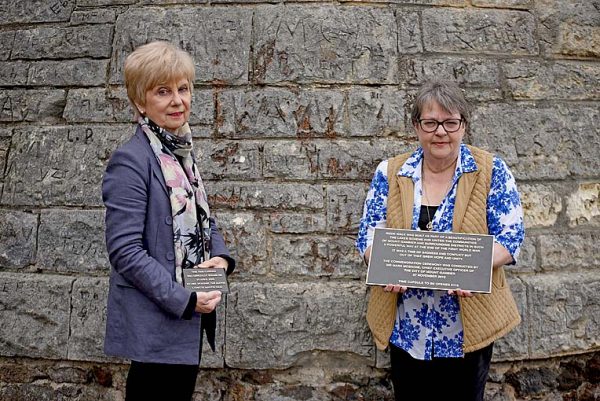
THE final chapter in the centenary celebration of Mount Gambier’s Rook Walk was held Monday as a time capsule was buried, ready to be unearthed in another 100 years.
Folders full of historic information, badges crafted by school children and the logo for the original Rook Walk working bee poster
were some items hoped to last another 100 years.
The capsule, a joint initiative between City Council and the Mount Gambier History Group, will be opened in 2118.
Retail brochures were also added as a snapshot of current fashion and prices.
“There is also a City of Mount Gambier report with a full history report of 1915 to present day including newspapers and magazines which we hope will survive,” history group vice president Lynn Lowe said.
“We put three USBs in there but we are not sure whether that technology will be readable, but we hope so because there is a video and audio of the day from last year on it.”
Following on from last year’s large commemorative event, Ms Lowe said the time capsule was the “final stage of the celebration”.
“The Rook Walk celebration really drew the community together and because of that we believed it to be worthy of a time capsule,” she said.
“We would like to thank all who had an input into the celebrations.”
Mount Gambier Mayor Lynette Martin expressed her fascination surrounding the capsule.
“It would be fascinating to see the response from the people who open it in 100 years time to see what life was like in 2019,” Mayor Martin said.
“I do not think you will ever see a working bee such as the Rook Walk ever again and it just goes to show the importance of volunteers which was recognised back then which we need to carry that spirit.”
Honoured to be a part of the celebrations, Mayor Martin helped bury the capsule, stating she was “proud to be a part of this moment in history”.
“The capsule adds another dimension for visitors coming to Mount Gambier and seeing a time capsule is always fascinating as it allows us to ponder the past and the future.”
The Rook Walk, bordering a stretch of Bay Road between the Blue and Valley lakes, was built on November 27, 1918.
More than 2000 people volunteered for the working bee, which was part of the lakes beautification scheme organised by hotelier Arthur Rook and the progress association.
Volunteers included tradesmen, labourers, bankers, shop assistants and 300 women who provided three meals during the day.





